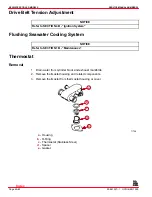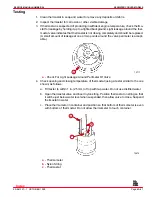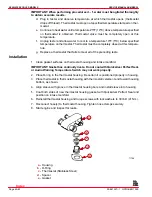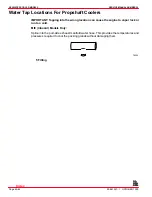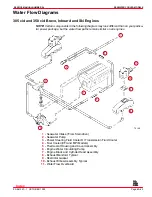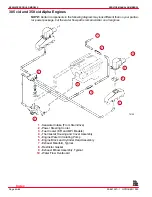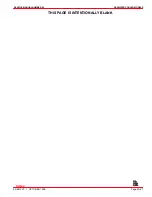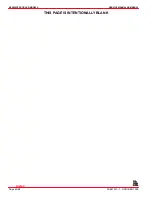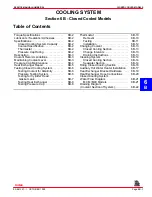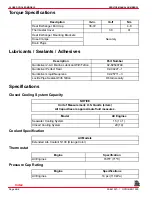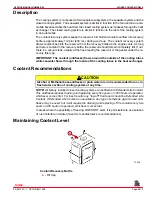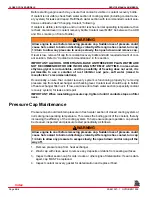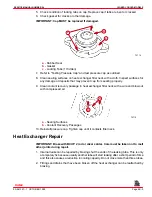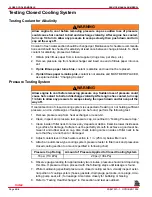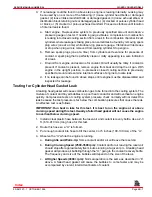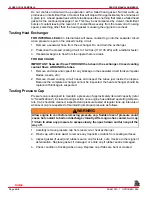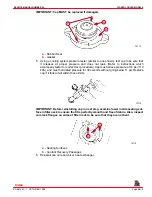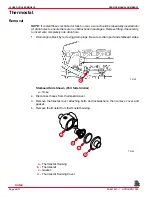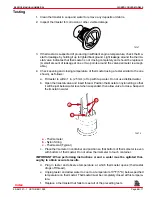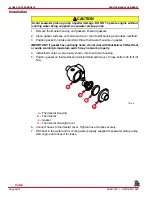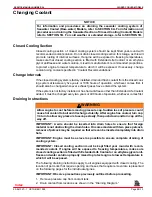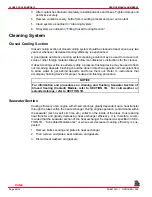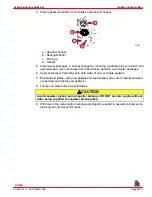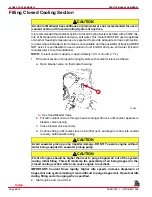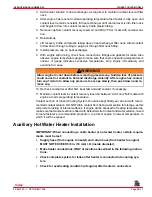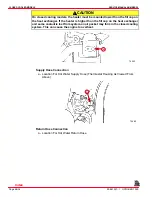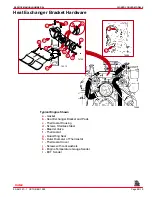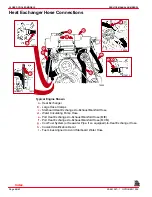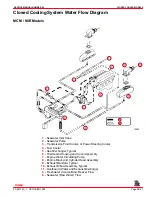
CLOSED COOLED MODELS
SERVICE MANUAL NUMBER 24
Page 6B-6
90-861327--1 OCTOBER 1999
Testing Closed Cooling System
Testing Coolant for Alkalinity
WARNING
Allow engine to cool before removing pressure cap as sudden loss of pressure
could cause hot coolant to boil and discharge violently. After engine has cooled,
turn cap 1/4 turn to allow any pressure to escape slowly, then push down and turn
cap all the way off.
Coolant in fresh water section should be changed per Maintenance Schedule recommenda-
tions and should be checked for alkalinity at least once between change intervals. To check
coolant for alkalinity, proceed as follows:
1. Obtain pink litmus paper from a local supplier (drug store, pet shop, etc.).
2. Remove pressure cap from heat exchanger and insert one end of litmus paper into cool-
ant.
3. If pink litmus paper turns blue, coolant is alkaline and need not be replaced.
4. If pink litmus paper remains pink, coolant is not alkaline and MUST BE REPLACED,
as explained under “Changing Coolant.”
Pressure Testing System
WARNING
Allow engine to cool before removing pressure cap. Sudden loss of pressure could
cause hot coolant to boil and discharge violently. After engine has cooled, turn cap
1/4 turn to allow any pressure to escape slowly, then push down and turn cap all the
way off.
If coolant section of closed cooling system is suspected of leaking or not holding sufficient
pressure, and no visible signs of leakage can be found, perform the following test:
1. Remove pressure cap from heat exchanger or reservoir.
2. Clean, inspect and pressure test pressure cap, as outlined in “Testing Pressure Cap.”
3. Clean inside of filler neck to remove any deposits or debris. Examine lower inside seal-
ing surface for damage. Surface must be perfectly smooth to achieve a good seal be-
tween it and rubber seal on cap. Also check locking cams on sides of filler neck to be
sure that they are not bent or damaged.
4. Adjust coolant level in fresh water section to 1 in. (25 mm) below filler neck.
5. Attach an automotive-type cooling system pressure tester to filler neck and pressurize
closed cooling section to amount specified in following chart.
Pressure Cap Rating
Amount of Pressure Applied to Closed Cooling System
16 psi (110 kPa)
20 psi (138 kPa)
6. Observe gauge reading for approximately two minutes; pressure should not drop during
this time. If pressure drops, proceed with the following steps until leakage is found.
7. While maintaining specified pressure on closed cooling section, visually inspect exter-
nal portion of cooling system (hoses, gaskets, drain plugs, petcocks, core plugs, circu-
lating pump seal, etc.) for leakage. Also listen closely for bubbling or hissing.
8. Refer to “Testing Heat Exchanger” in this section and test as outlined.
Index

